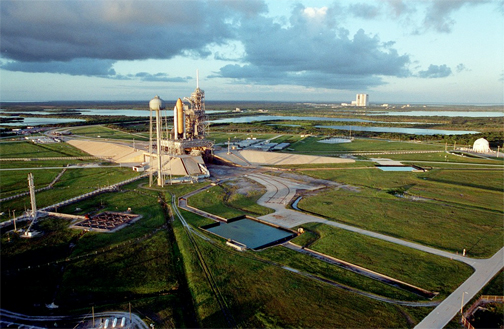

The initial concerns following a catastrophic launch failure are focused on the safety and well-being of those who were involved in the actual event — when all personnel are accounted for, thoughts then turn to the business considerations of such a disaster.
For SpaceX, the loss of a Falcon 9 launch vehicle, the gantry and pad structures (damage totals are still being assessed) and the Spacecom AMOS-6 payload, all are quite staggering. Preliminary data acquired by SpaceX seems to indicate problems with the liquid oxygen tank at the rocket's upper stage—both the firm and the US Federal Aviation Administration are now examining more then 3,000 telemetry channels that were in play at the time of the accident.
The cost for the restoration of all of the equipment and associated components, the investigation of the event, the replacement launch vehicle and partner products, a potential increase in pre- and post-launch insurance premiums, payments to Spacecom for their lost satellite... this will all run into the multi-millions of dollars. The repairs to Space Launch Complex 40 could take a year or more to fully repair to operational status, according to industry sources.
The commander of the Space and Missile Systems Center, Lt. Gen. Samuel Greaves, has stated that the US Air Force is ready to support all recovery efforts at the site and to assist in a return to full operational status. The Air Force will be included as participants in the failure investigation, especially as SpaceX is certified by the Department of Defense to launch military and ISR satellites. The Air Force monitors each SpaceX and United Launch Alliance launch at Cape Canaveral Air Force Station.
Then there's the loss of a viable launch venue for the satellite and space industry that is certainly going to be traumatic for manufacturers and operators as more and more satellites are attempting to locate rides to their designated, orbital slots. Even prior to the SpaceX launch, there were not enough windows of opportunity to handle with alacrity even the current crop of spacecraft... now, with a major venue off the planning board, the vacuum for satellite deliveries to orbit will be even more severe. Mix in the fact that SpaceX was also part of NASA's manned spacecraft program, that 2017 expected mission start may well be seriously delayed, as crew flight safety will be the main concern for the agency and the company.

Space Launch Complex 29A at the Kennedy Space Center.
Photo is courtesy of NASA.
For SpaceX, there is the possibility they will be able to move future launches to another pad the company is leasing from NASA, Launch Complex 39A (LC-39A). This pad is currently being modified for the SpaceX Falcon Heavy rocket. SpaceX also operates a launch site at Vandenberg Air Force Base in California. Both of these sites could accommodate future launches by the company.
For Spacecom, there are some financial considerations that may assist in partially offsetting their satellite loss costs. As this was a static-fire test, the company had a pre-launch policy that will require Israel Aerospace Industries (IAI), the builder of the satellite, to reimburse Spacecom for payments the firm had already made to them—to the tune of more than $175 million. There was also a launch insurance policy of $330 million, but as there was no launch and only the attempted test, the premium of approximately $40 million is the only refund due the firm.
According to Spacecom, they will also be seeking to contract for a filler satellite build to offset the loss of the AMOS-6's projected coverage. The firm is also working on a contract for an AMOS-17 satellite. Given the losses of this event, financing for such projects will be quite challenging and deciding which of the two satellites will be the more important craft to launch when considering customer urgency is high on their agenda.
Another area of concern continues to be Spacecom's pending company sale to Beijing Xinwei Technology Group, with that sale having highly contingent upon the success of the AMOS-6 launch. The latest information is that talks between the two companies are continuing, but that perhaps the original $285 million price tag is no longer valid and discussions will sort through a repricing of the acquisition.
Misfortune can strike at any moment to affect our personal lives and damage business goals. Those who are able to manage the disappointments and the slings and arrows of others that cascade down upon them during times of adversity will be all the stronger for their ability to continue what they have been driven to accomplish — negate the obstacles and to then succeed with their business and personal missions... and often even made stronger by the lessons learned along the way.

